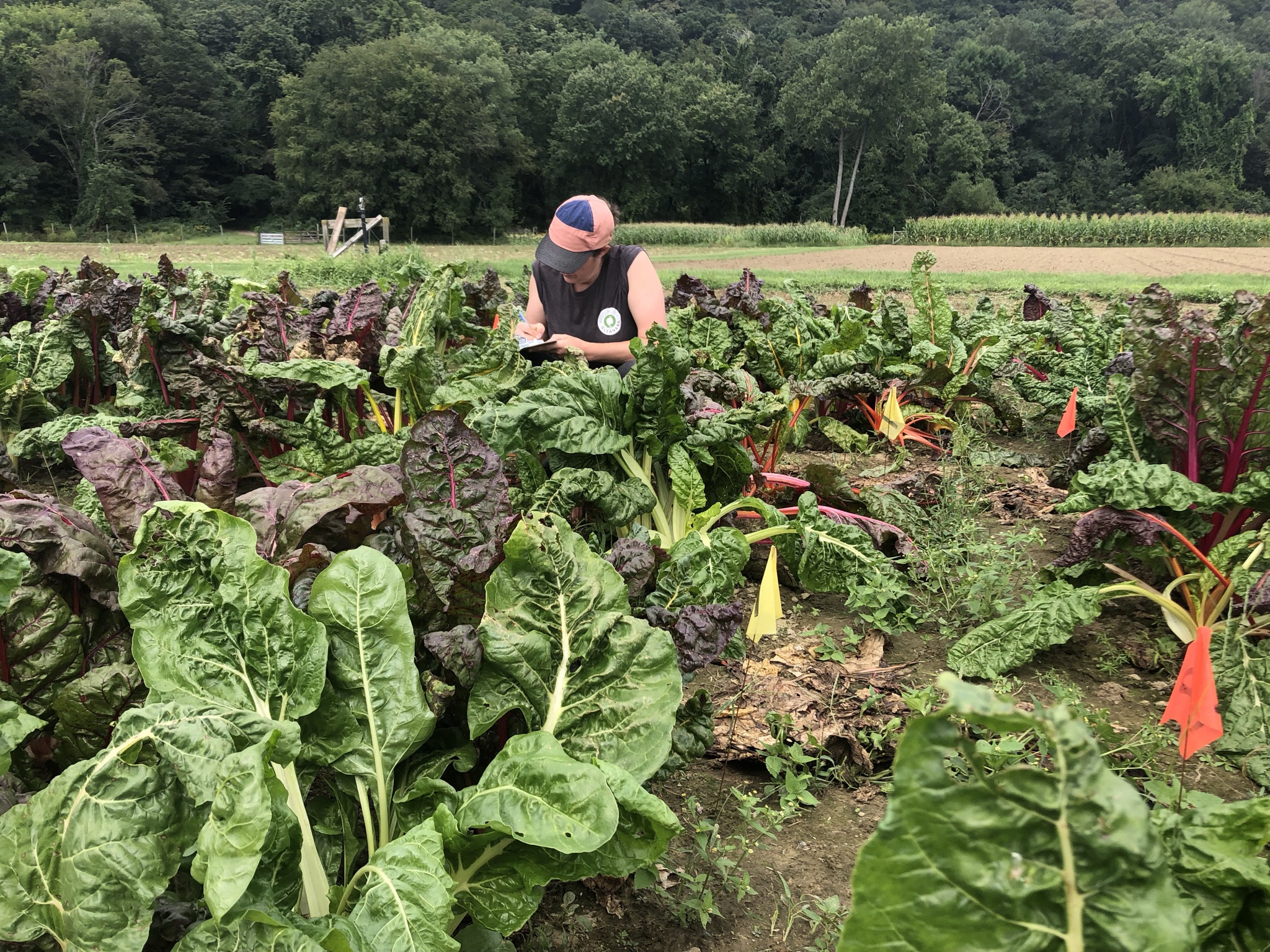The experiment was conducted at the University of Massachusetts Research and Education Farm in Deerfield, MA in a field with soil classified as a Hadley silt loam. ‘Bright Lights’ chard seeds were sown on May 24 in the greenhouse in 72-cell flats and moved outside to harden off on June 18. Soil was amended with 5, 4, and 8 lbs/A of N, P, and K, respectively, in the form of 5-4-8. Seedlings were planted with a waterwheel transplanter on June 22 into 5-ft wide beds. Plots were 6’ long, with 2’ of unplanted bed between plots in the bed, and consisted of 3 rows of chard planted 12” apart in-row. Plots were arranged in a randomized complete block design. There was enough natural rainfall during the growing season that irrigation was not needed. Weeds were controlled by hand within and between beds. We did not harvest leaves regularly and so plant growth became very dense, so lower leaves were removed from all plots on August 24 to maintain plant health.
Fungicides were applied weekly, July 16-September 10, using a CO2 pressurized backpack sprayer delivering 30 psi with two TXA8004VK hollow cone nozzles, 20” apart, to achieve adequate leaf coverage. Treatments were as follows:
- Untreated control (water only)
- Quadris 15 fl oz ALT Tilt 4 fl oz/A (positive control, industry standard)
- Badge X2 1.25 lb/A
- Stargus 2 qt/A + Badge X2 1.25 lb/A
- Regalia 1 qt/A + Badge X2 1.25 lb/A
The trial was inoculated with CLS on August 3 by placing two infected leaves into each plot and irrigating 1 hour with overhead irrigation gun.
Cercospora leaf spot (CLS) severity was assessed weekly, on July 20 and 27, August 3, 10, 17, 24, and 31, and September 7 and 14, by estimating the percentage of symptomatic leaf area on 10 leaves, as well as in each plot as a whole. Disease severity data were used to calculate area under the disease progress curve (AUDPC).
Average monthly air temperatures (°F) were 69.6 from July 20-31, 73.1 in August, and 65 from September 1-14. Rainfall (in.) was 1.55 from July 20-31, 4.06 in August, and 2.89 from September 1-14.
All data were analyzed using a general linear model and means were compared using Tukey’s honestly significant difference test (P = 0.05) in SAS (SAS v.9.4, SAS Institute, Cary, NC).
The positive control (Quadris 15 fl oz/A ALT Tilt 4 fl oz/A) and all three experimental treatments significantly reduced the CLS AUDPC compared to the untreated control, and the positive control and all three experimental treatments performed statistically the same. However, on the final rating date, September 14, the positive control and Regalia + Badge X2 treatments did not have significantly different levels of CLS severity than the untreated control. On the final rating date, the CLS severity in the Badge X2 and Stargus + Badge X2 treatments were significantly lower than that of the untreated control, but those treatments still had 31.3 and 32.5% severity, respectively, and most of the full-sized leaves in those treatments were still unmarketable.

